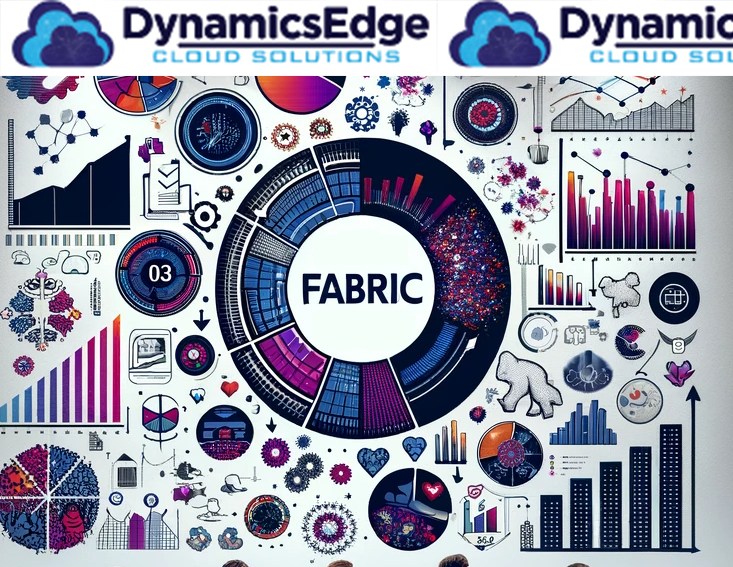In today’s fast-paced world, data is not just a resource; it’s the backbone of decision-making across industries as diverse as retail, manufacturing, entertainment, sports, and the public sector. The ability to efficiently process, analyze, and glean insights from this data can be the difference between leading the market or falling behind. This is where Microsoft Fabric enters the scene as a game-changer, especially for those grappling with complex data analytics challenges in these sectors.

Imagine a retail giant struggling to integrate customer data from various sources to predict trends and personalize marketing. Here, Microsoft Fabric’s unified analytics platform could revolutionize their approach. It integrates disparate data sources, allowing the retailer to leverage real-time analytics for targeted campaigns, enhancing customer engagement and driving sales.
In manufacturing, consider a scenario where predictive maintenance is key to minimizing downtime. Microsoft Fabric can harness IoT data, analyze it in real-time, and predict equipment failures before they occur, ensuring uninterrupted production lines and cost savings.
For the entertainment industry, imagine streaming services seeking to optimize content recommendations. Microsoft Fabric’s robust analytics and machine learning capabilities could analyze viewing patterns and preferences, offering personalized content recommendations, thereby enhancing viewer experience and retention.
In sports, teams often struggle with optimizing player performance and health management. Microsoft Fabric could analyze diverse data sets, from player health metrics to game strategies, providing insights for better decision-making, strategy formulation, and injury prevention.
For the U.S. Federal Government and associated private organizations, data security and compliance are paramount. Microsoft Fabric, with its integrated security and compliance features, can manage sensitive data while providing powerful analytics, aiding in decision-making processes that are secure and compliant with regulations.
In all these scenarios, Microsoft Fabric stands out for its ability to integrate and process vast amounts of data quickly and efficiently. As a successor to Azure Synapse Analytics, it offers a more holistic approach. Azure Synapse Analytics, primarily focused on big data analytics, data warehousing, and ETL (Extract, Transform, Load) processes, is a powerful tool, but Microsoft Fabric takes it a step further. It not only encompasses these capabilities but also integrates with Power BI for enhanced business intelligence and data visualization.
Comparatively, Power BI focuses on business analytics services, providing tools for aggregating, analyzing, visualizing, and sharing data. While Power BI is a component of Microsoft Fabric, Fabric extends its functionality into a more comprehensive platform that covers a wider range of analytics workloads.
With event pipeline technologies like Kafka and Azure event pipeline services, Microsoft Fabric offers a broader scope. While Kafka is an open-source stream-processing software platform, used for building real-time data pipelines, Microsoft Fabric integrates such capabilities within its platform, offering a more unified approach to data analytics. Similarly, Azure event pipeline services focus on specific aspects of data processing, but Microsoft Fabric brings these elements together into a cohesive, more user-friendly platform.
ETL stands for Extract, Transform, Load, a process pivotal in data handling, especially in the context of Microsoft Fabric. “Extract” refers to the process of retrieving data from various sources. This step is crucial as it involves gathering raw data, which could be structured or unstructured, from different databases or systems. In the ETL process, extracting is the first stage, setting the foundation for subsequent data processing.
“Transform” is the next phase where the extracted data is converted into a format suitable for analysis. This transformation can include cleaning, sorting, aggregating, and other methods to refine the data. This step is vital as it ensures the data is in a consistent and usable format, ready for insightful analysis.
The final step, “Load,” involves transferring the processed data into a data warehouse or repository. This is where the transformed data is stored and made accessible for business intelligence and analytics purposes. Loading is critical as it determines the efficiency of data retrieval and the overall performance of the data system.
For an entertainment company, Microsoft Fabric could be used to manage the ETL processes for vast amounts of viewer data, integrating this with real-time analytics to provide insights into viewer preferences and trends. In retail, it could streamline the ETL process for customer data, enabling the retailer to quickly analyze purchasing patterns and adjust inventory and marketing strategies accordingly.
Microsoft Fabric represents a significant advancement in data analytics, offering a comprehensive, integrated solution that caters to a wide range of industries. Its ability to unify disparate data sources, combined with powerful analytics capabilities, makes it an ideal choice for organizations looking to leverage their data for strategic decision-making. Whether it’s enhancing customer experiences in retail, optimizing manufacturing processes, personalizing entertainment content, improving sports strategies, or ensuring data security in the public sector, Microsoft Fabric provides the tools necessary to transform data into actionable insights.
Have a Question ?
Fill out this short form, one of our Experts will contact you soon.
Call Us Today For Your Free Consultation
Call Now